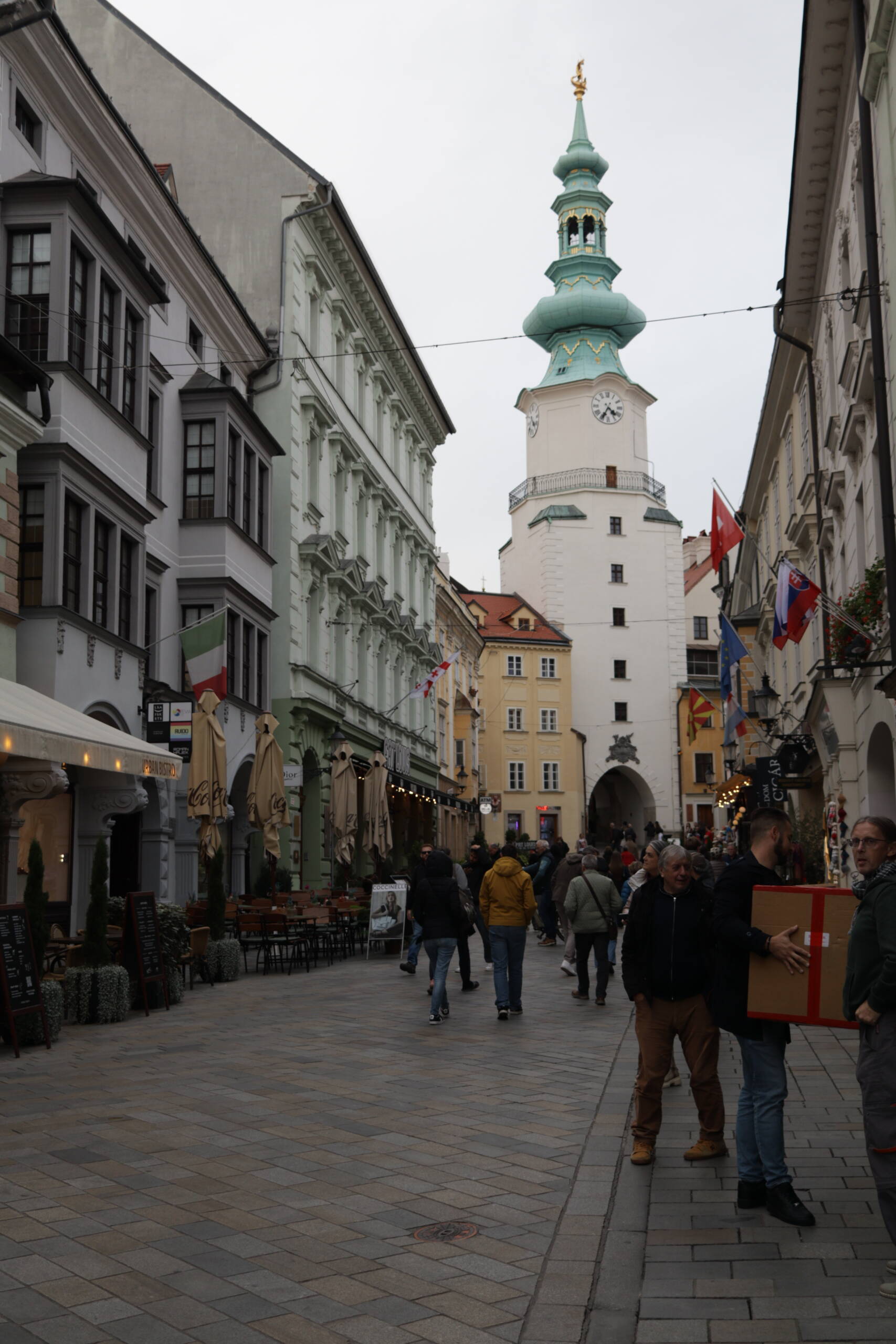The scene of Michael’s Gate with its candy-green copper spire is charming at first glance, the kind of old-world landmark that tourists are meant to adore. The pastel facades, the rows of flags, the cobblestones all conspire to deliver that carefully arranged “historic Europe” aesthetic. And yet, when you look a little closer, it feels strangely hollow. The cafés with their branded umbrellas promise authenticity but serve the same tourist-priced menus you can find anywhere from Prague to Salzburg. The souvenir shops tucked along the street beckon with the same mass-produced trinkets, flags of every possible country fluttering overhead in a show of forced internationalism. Even the people wandering the street, some with shopping bags and others with cameras at the ready, seem less like residents and more like extras cast for the part of “European city wanderers.”

There’s a sense here that the depth has been skimmed off, leaving a polished surface meant to be consumed quickly, like a backdrop for selfies. The architecture is undeniably pretty, but it’s the kind of prettiness that becomes a stage set—well-lit, clean, curated—rather than a living city. The outdoor tables sit waiting, not for locals finishing work and lingering over a glass of wine, but for streams of visitors who will stop, order, post a photo, and move on. The gate itself, once the medieval threshold into the heart of the city, now feels reduced to a decorative arch at the end of a shopping lane.
This is the trouble with overly tourist-shaped places: they offer the image of culture without the texture. Everything looks just right, but there’s no grit, no surprise, no hidden corners where the real city breathes. Instead, it’s Bratislava simplified into a digestible postcard, an easy stopover that photographs well but leaves you searching for something beneath the surface—something that, at least here, seems just out of reach.
Leave a Reply